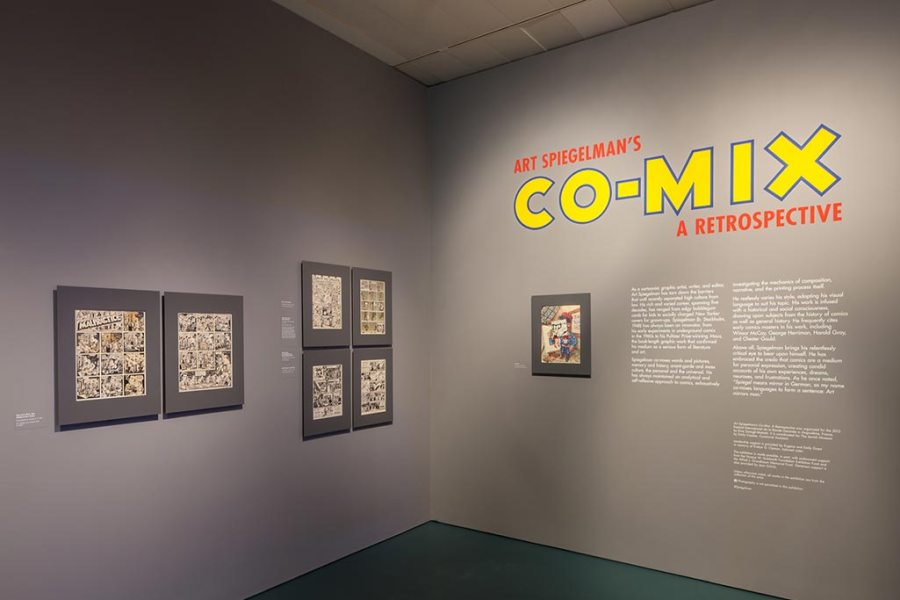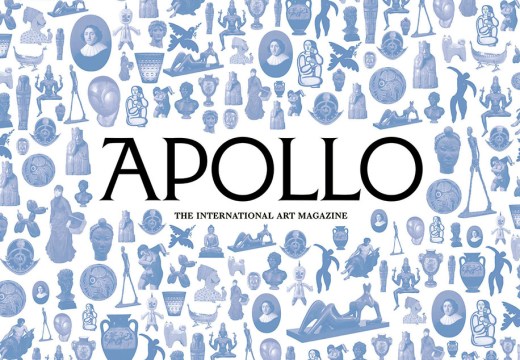With its moody lighting and dark walls lined with a panoply of small images and even tinier text, stepping into ‘Art Spiegelman’s Co-Mix’ is very much like stepping into another world in miniature, governed by its own somewhat hallucinatory visual logic. The show, which opened recently at the Jewish Museum of New York after touring internationally for two years, is an expansive retrospective tracing Spiegelman’s career from his earliest underground comics in the 1960s through his contemporary New Yorker covers and forays outside the visual arts, including collaborations with the dance troupe Pilobolus.
Taking in the expanse of works on display is like reading a kaleidoscope in reverse: to comprehend the whole requires (and above all, rewards) close examination of each individual part. In Spiegelman’s work, the devil – and the delight – is in the details.
Spiegelman is best known for his moving graphic novel about the Holocaust, Maus, which won the Pulitzer Prize in 1992. As the exhibition title suggests, however, he produced a staggeringly varied body of work determined by its hybridity, co-mixing not only word and image, but different styles and formats, and ‘high’ and ‘low’ art influences, into pieces that are by turns subversive, humorous, and moving. The hallucinatory visual effect of the show is partially a product of the physical realities of the comic genre, with its succession of diminutive and intricate frames, displayed en masse. But it is also the product of Spiegelman’s incredible artistic breadth and flexibility, as he changes his technique to meet the demands of his subject and format with dizzying skill.
His early underground ‘comix’ of the 1970s have the feel of psychedelic surrealist dream collage; work for Topps bubblegum evokes the distinctive style and subversive spirit of Mad magazine; a number of comics channel the cubists; and, in the irreverent ‘Shaggy Dog Story’, a nude with Matisse’s curves and a Chester Gould face rolls around with a dog (aesthetics aside, this last comic also seems to be having a delightfully tongue-in-cheek joke at the expense of readers looking for ‘doggie style’ pornography in the pages of Playboy, where it was originally published). The result is a kind of frenetically changeable aesthetic of excess, which even as it situates itself in relation to other artists still feels unfettered by anxiety of influence.
Spiegelman’s stylistic allusions are so wildly generative at least in part because his work is also nothing if not self-aware. It is always engaged with the questions of context, meaning, and form that are raised by, and bear upon, his chosen medium of the comic. Among the larger-scale images at the end of the show is a 1990 lithograph entitled ‘Lead Pipe Sunday’ commemorating the centennial of the Sunday funnies. A man whose facial features have been replaced with a dollar sign lies sprawled on the floor next to a woman with a garland around her head. The caption reads, ‘The Bastard offspring of art and commerce murder their parents and go off on a Sunday outing.’
Comics, Spiegelman reminds us, are the product of an uneasy and illegitimate union of commercial and artistic interests that threatens both equally. Yet in a world where a Francis Bacon triptych is sold, to applause, for a quantity of money inconceivable to most living beings on the planet, it would seem that the marriage of art and commercialism has long-since been legitimised, with far more objectionable consequences. If all the bastards are like Spiegelman’s, it may well be time for them to reign.
‘Art Spiegelman’s Co-Mix: A Retrospective’ is at the Jewish Museum, New York, until 23 March 2014.
Unlimited access from just $16 every 3 months
Subscribe to get unlimited and exclusive access to the top art stories, interviews and exhibition reviews.














![Masterpiece [Re]discovery 2022. Photo: Ben Fisher Photography, courtesy of Masterpiece London](http://www.apollo-magazine.com/wp-content/uploads/2022/07/MPL2022_4263.jpg)
It’s time for the government of London to return to its rightful home